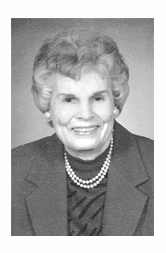Watching the numerous trucks delivering merchandise brought to mind the Huckster wagons. They were popular in the early part of the century bringing food and other wares to country homes.
I remember when I was a youngster waiting with my sisters and mother for the Smiley Huckster wagon to stop in front of our rural home where we would climb on board and scan the choice of candies and cookies while our mother selected more wholesome food.
Soon afterward, the Huckster ceased delivering Morrow County was served by several Huckster wagons in the early 1900s and at that time they were horse drawn. B. F. Smith’s wagon served customers in the Pulaskiville area.
As in most cases, Mr. Smith also operated a general store in the village in 1910. His wagon was pulled by a team of mules. At that time, bartering was the normal means of transaction, such as trading eggs and produce for needed food or merchandise for the family.
In Marengo, Dart Chase had both a meat market-grocery and also operated a Huckster wagon, trading groceries to farmers for eggs and cream.
A story in the April 14, 1955 edition of The Morrow County Sentinel describes the business career of W. H. Holland who began in South Bloomfield where he drove a Huckster wagon for Dell Vail. Later, he became the owner of the largest retail store in Morrow County, the Union Store.
Smiley’s Market in Cardington had three Huckster Wagons which by the 1940s functioned with motors and drivers. Kent Curl, a native of Cardington, now living in Coronado, California, remembers the wagons when they were parked near Smiley’s Market in Cardington, ready to take to the country roads.
The Huckster wagon was ahead of its time and I’m glad I had the experience of stepping into one and viewing all those neatly lined shelves with food, and especially inviting to a 10-year-old, the penny candy.
50 years ago, January, 1971: William Shonk, superintendent of the Glendale Cemetery, reported 37 burials in 1970 and two burials made in Bethel Cemetery. The dress code of the elementary school was clarified with girls being encouraged to wear leggings or slacks to and from school and on the playground.
However, they were not to wear these articles of clothing in the classroom. Shorts, pant suits and other casual clothing were not allowed. Boys were not permitted to wear shorts to school. “Our purpose is to establish a school like atmosphere in dressing,” wrote the principals.
From the January, 1944 issue of the school newspaper, The Searchlight: Male faculty members Lowell Patterson, Hobert Sockman, Heber Schellenger Mr. Dambach and Supt Slack played the following high school boys in a game of volleyball: Gale Barry, Bob Sherman, Clydelle Thomas, Nelson Clinger and Carol Dodds. The women faculty members led the cheers.







